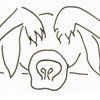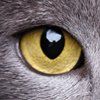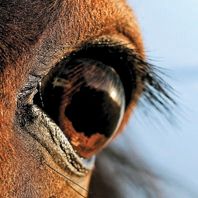Veterinary Medicine Essentials: Glaucoma
Each Veterinary Medicine Essentials package covers diagnostic steps, treatment plan guidance and the latest updates, plus resources to share with your entire veterinary team and your clients.

Increased intraocular pressure = glaucoma. This is what you've been taught, but new research shows that diagnosis is more involved than this one factor. And treatment varies based on the severity and type. We've gathered our best articles on managing this painful ophthalmic disease in your veterinary patients.
Updates on glaucoma

Read this before you buy a tonometer
Nov 17, 2016
Eyeing a new veterinary tonometer? Here's a quick buying guide before you spend. ...
A Fear-Free tip for your ophthalmic examinations
Jul 10, 2015
Get pet owners involved to make the experience more comfortable for everyone. ...
Veterinary glaucoma update
May 08, 2015
Expert news from the frontlines of eye care ...
Live from CVC: Beyond IOP: Rethinking glaucoma diagnosis
May 12, 2014
Glaucoma isn't just about increased intraocular pressure, says veterinary ophthalmologist Dr. Ken Abrams. ...
Just Ask the Expert: Is routine measurement of IOP in pets at risk of glaucoma advisable?
May 26, 2010
Get the answer from veterinary ophthalmologist Juliet Gionfriddo. ...
Study shows collar stress can heighten glaucoma risk
Jul 01, 2006
Madison, Wis. - A study conducted by a University of Madison-Wisconsin veterinary ophthalmologist showed an increase in intra-ocular pressure (IOP) in dogs while pulling on a collar, confirming a correlation between glaucoma and collar stress. ...
Diagnosing glaucoma

A new way of looking at glaucoma
Elevated intraocular pressure is now considered a risk factor for developing this common ocular disease, not the means of diagnosis. ...
Video: What's the best way to measure intraocular pressure?
Dr. Micki Armour's preferred method for obtaining the most reliable measurement. ...
Glaucoma: The 5 o'clock emergency (Proceedings)
Glaucoma is a syndrome in which progressive elevation in intraocular pressure (IOP) of the eye results in damage to the optic disk and retina, causing blindness. ...
Glaucoma: Early recognition and initial treatment (Proceedings)
Early recognition of glaucoma is essential in managing this disease and preventing the natural outcome, which is a painful and blind eye. Recognition is preceded by having a suspicion for glaucoma, and various signs, including fixed and dilated pupils, engorged episcleral vessels, and a hazy cornea, should heighten this suspicion. ...
Update on glaucoma in dogs (Proceedings)
The glaucomas are a group of conditions in dogs characterized by increased intraocular pressure and progressive optic nerve and retinal degeneration. This can be one of the most devastating and frustrating ophthalmic conditions, both for the general practitioner and the ophthalmologist. This article will discuss the current clinical understanding of glaucoma and the treatment options. ...
How to make the most of your ophthalmic examination (Proceedings)
Advice on how to perform an organized examination of the eye. ...
Treating glaucoma

Your treatment options for glaucoma in small animals
Pharmacologic and surgical treatment options provide management of clinical signs, but there is no "cure" for these cases. ...
Glaucoma crisis: When to turn to surgery and when to refer
Guidance on knowing when medical intervention isn't sufficient any longer. ...
Skills Laboratory: How to perform transpalpebral enucleation
A step-by-step guide to removing a patient's painful, nonvisual eye. ...
A modified subconjunctival enucleation technique in dogs and cats
Globe removal is indicated in patients with blind, painful eyes or patients with nonresectable intraocular tumors. ...
Treating glaucoma in your equine veterinary patients
There's no easy fix for this condition, but these tips can help you diagnose and manage the progression of disease. ...
Associated conditions

Immune-mediated keratitis in horses
Early diagnosis and veterinary treatment are key to saving the sight of equine patients with IMMK. ...
CVC highlight: It's all in the eyes: A look at ocular signs of disease
Dr. Kaese reviews ocular signs that may indicate systemic disease in patients. ...
Feline uveitis: A review of its causes, diagnosis, and treatment
Uveitis is a common and painful ocular disease in cats that can eventually lead to blindness. ...
A challenging case: Uveitis and secondary glaucoma in a cat
A 9-year-old male neutered domestic shorthaired cat was referred to The Veterinary Eye Clinic in Wheat Ridge, Colo., for evaluation of acute, progressive uveitis in both eyes and glaucoma in the right eye. ...
Arming the team

Eye drop delivery in a scared kitten: Two wrong ways, then a right
Watch this video. Your feline patients will thank you. ...
Wellness screens for senior pets
Raise your veterinary clients' awareness of important changes their older pet may be experiencing. ...
Open the door to senior care at your veterinary clinic
Those soft, white muzzles and wise eyes beg for your attention and compassion. Use these easy adaptations to offer a gentle veterinary experience to aging pets. ...
Basic ophthalmic diagnostic techniques for technicians (Proceedings)
History, ocular surface diagnostics, tonometry, culture and sensitivity, cytology, biopsy, ERG, ultrasound ...
Non-compliance: Who's really taking the legal risk?
My lovely wife Mary recently threw me a giant 50th birthday party. While the gag gifts were entertaining, the conversations were enlightening. ...